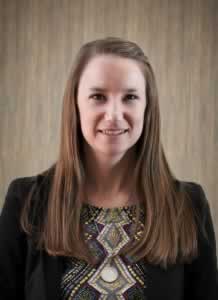These 7 professional development tips for your instructional technology integration plan can help educators adapt to new technological advances
 The role of instructional technology in the classroom has steadily increased over the past decade.
The role of instructional technology in the classroom has steadily increased over the past decade.
These advances include the use of computers and tablets in classrooms, over 300,000 K-12 students enrolled in fully online programs in the 2012-2013 school year, and the use of new instructional technological tools – including interactive whiteboards, digital light processing projectors, and digital cameras.
While the proven benefits of instructional technology highlight the need for its widespread adoption, it is important to consider that professional development opportunities are essential to better train educators in the effective use of instructional technology.
Major challenges for districts include preparing teachers who are trained in “traditional” classroom delivery methods to integrate instructional technology into curricula as well as the infrastructure or knowledge base to effectively integrate technology into instruction.
Professional development provides educators the opportunity to understand new advancements and adapt their teaching styles and pedagogy to make effective use of available educational enhancements.
Based on our research at education research firm Hanover Research, we present 7 tips for structuring instructional technology professional development:
1. Provide ongoing support
Through instructional technology coaching, professional learning communities, and information repositories, teacher professional development should be highly customized. There is a need for delivering immediately usable solutions to the daily challenges that teachers will face when making major curricular changes in their subject areas.
(Next page: PD tips 2-7)
2. Promote understanding of technology pedagogical practices
This practice can be more important to effective instruction than technical mastery of technology, although both elements are essential. Extensive training in both pedagogy and technology are needed through ongoing professional development opportunities.
3. Teacher participation
Teachers participating in a PD program that includes coaching or mentoring are more likely to implement new instructional methods. A study conducted by the International Society for Technology in Education (ISTE) demonstrated that teachers who received coaching implemented new instructional methods at a rate of 85 percent, while only 15 percent of teachers without coaching support implemented new methods.
4. Adopt a learner‐centered pedagogy
These schools tend to experience greater integration and more effective use of technology in the classroom. Technology is less effective when used to support traditional “teacher‐centered” pedagogies, which tend to use technology as a supplement rather than as a core element of instruction.
5. Provide access to online information repositories
These repositories offer teachers continuous and convenient access to relevant teaching resources. Many teachers report success conducting research at their own pace. The characteristics of an instructor’s particular subject area may also demand specialized investigations and considerations. For these reasons, successful professional development programs offer extensive online resources that teachers can access and search as needed.
6. School structure
Structure your school’s “policies, practices, culture, and funding” to facilitate the integration of educational technology. Successful change in the classroom must be supported at the building and district levels. If access to and use of technology are not continuous from year-to‐ year, it is difficult to effect meaningful change in pedagogy.
7. Make use of the technologies that teachers will be using.
The ISTE notes that “learning with technology is more important than learning about technology.” Teachers benefit by seeing what and how they can learn through available technological tools.
Incorporate these 7 professional development tips into your instructional technology integration plan to provide opportunities for educators to fully understand and adapt their instructional techniques to new technological advances.
Amy Moynihan is currently a Ph.D. candidate in Higher Education at The University of Virginia, Curry School of Education.
- 3 ways to avoid summer learning loss - April 19, 2024
- High school students say AI will change the workforce - April 18, 2024
- Motivating students using the Self-Determination Theory - April 17, 2024


